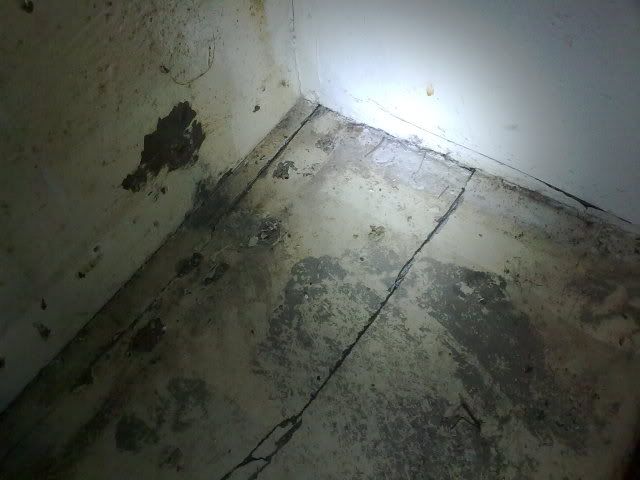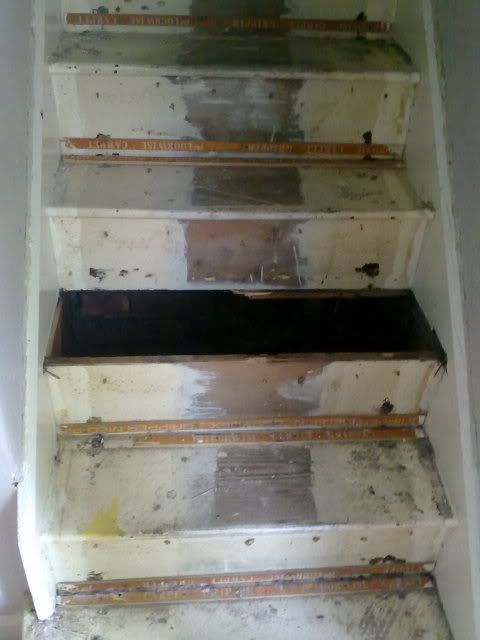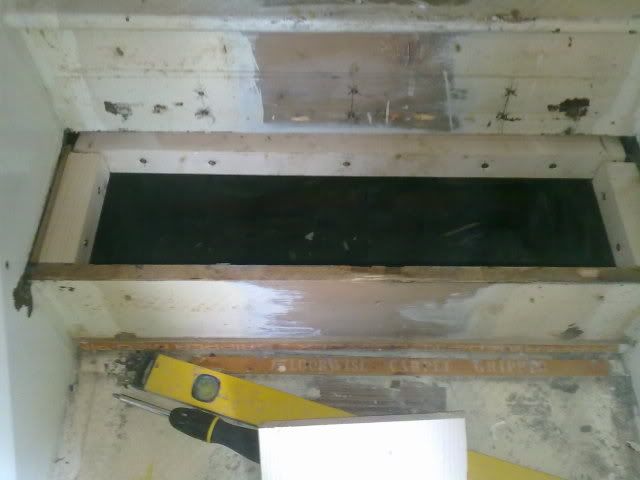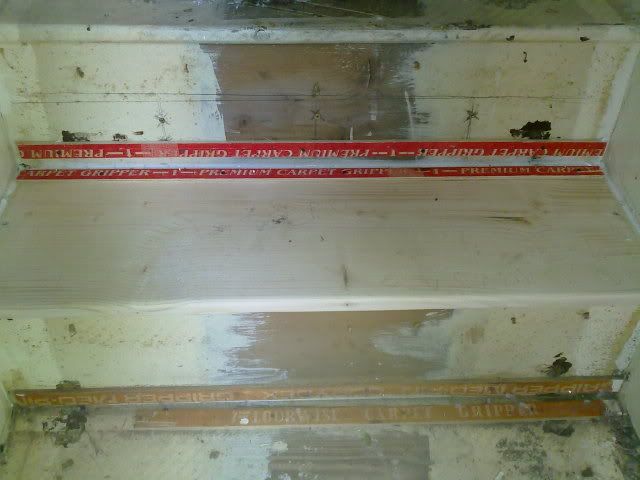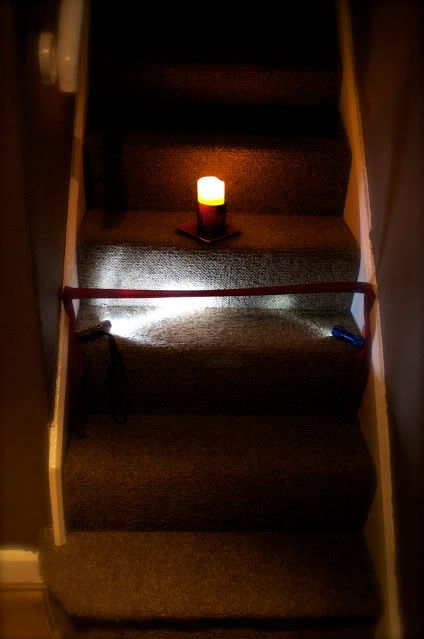Hi all,
The missus and kids are away for a week and I've 'been tasked' with completing a couple of DIY tasks...one of which is to replace the carpet (although I won't be fitting it this time).
I've pulled the existing carpet up (no underlay, probably accounts for why the carpet is in such a state) and screwed down a few squeaky floorboards whilst at it.
However, on the third step up on the stairs the tread has split (not entirely but approximately 1/2 across). Before the carpet was lifted you could tell something was amiss here as the tread sunk a little when weight was placed upon it.
I've carried out a little research (many searches returning me to this site) but don't seem to have found a solution:
My main problem is that I have a couple of days before the carpet is hopefully fitted and I'm away this weekend before my (heavily pregnant) missus returns home - during this time I also have to paint the hall walls and gloss all the wood. I initially thought I could merely lift (knock) out the tread and replace with likewise...however it looks like the tread slots into the skirting (is underneath)...and knowing the skirting in this house, that in turn probably enters the brickwork. In other words, not an option (given the fact that my missus could give birth at any moment and the last thing she wants is a dirty staircase to content with!).
Then I thought I could add some plywood over the top - but again I read on here about the brain 'guessing' the height as you ascend/descent said stairs...
I also cannot enter from below as there is a wall there...
Any idea's folks? If the only option is to pull up the skirting (completely unfeasible now) then I'd perhaps think of adding some extra underlay and make do with the sag...
Cheers - hope that all makes sense, it's late and I've had a bit of crash course in stairs and carpets this evening.
Pic below:
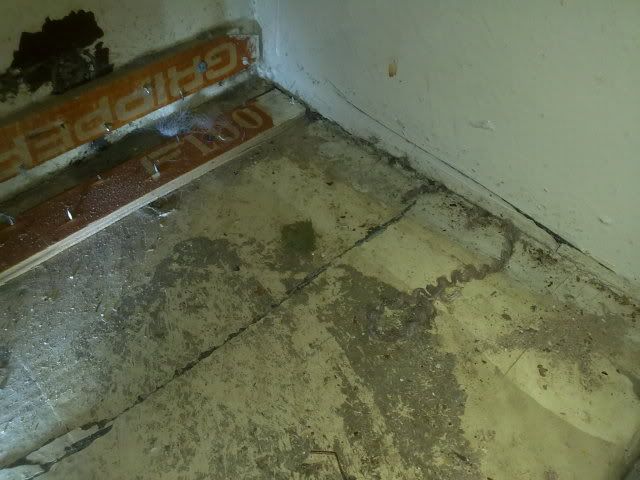
The missus and kids are away for a week and I've 'been tasked' with completing a couple of DIY tasks...one of which is to replace the carpet (although I won't be fitting it this time).
I've pulled the existing carpet up (no underlay, probably accounts for why the carpet is in such a state) and screwed down a few squeaky floorboards whilst at it.
However, on the third step up on the stairs the tread has split (not entirely but approximately 1/2 across). Before the carpet was lifted you could tell something was amiss here as the tread sunk a little when weight was placed upon it.
I've carried out a little research (many searches returning me to this site) but don't seem to have found a solution:
My main problem is that I have a couple of days before the carpet is hopefully fitted and I'm away this weekend before my (heavily pregnant) missus returns home - during this time I also have to paint the hall walls and gloss all the wood. I initially thought I could merely lift (knock) out the tread and replace with likewise...however it looks like the tread slots into the skirting (is underneath)...and knowing the skirting in this house, that in turn probably enters the brickwork. In other words, not an option (given the fact that my missus could give birth at any moment and the last thing she wants is a dirty staircase to content with!).
Then I thought I could add some plywood over the top - but again I read on here about the brain 'guessing' the height as you ascend/descent said stairs...
I also cannot enter from below as there is a wall there...
Any idea's folks? If the only option is to pull up the skirting (completely unfeasible now) then I'd perhaps think of adding some extra underlay and make do with the sag...
Cheers - hope that all makes sense, it's late and I've had a bit of crash course in stairs and carpets this evening.
Pic below:



